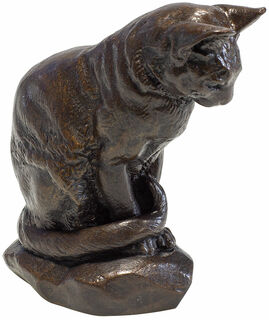
Antoine-Louis Barye
1795-1875
At the Paris Salon of 1831, Bayre caused a sensation with his sculpture "Tiger Devouring a Gavial Crocodile". He was the first to introduce such dramatic and veristic scenes into 19th-century sculpture, which were only similar to the art of Eugène Delacroix. Barye no longer saw the animal as the symbolic carrier of meaning but depicted it in its various genres and their peculiarities.
Extensive studies in the Jardin de Plantes and the National Museum of Natural History in Paris enabled him to create precise representations of nature. In doing so, he took the sculpture out of academic Classicism and contributed to its departure into the modern age.
The son of a goldsmith was born on September 24, 1795, in Paris and received his first training from his father. This was followed by an apprenticeship as a steel engraver, which was perfected through admission to the studios of the sculptor Bosio and the painter Gros. In 1818, Barye was admitted to the École des Beaux-Arts. When the Salon of 1837 rejected him, he founded an arts and crafts firm with a partner, where the models for the world-famous Parisian bronzes were created.
Although he received state commissions through influential patrons, his art only gained general recognition after 1848. He became a professor of zoological drawing at the National Museum of Natural History in 1854 and a member of the Académie des Beaux-Arts in 1868.
Antoine-Louis Barye also created special works of art as a painter and graphic artist, especially with his landscape watercolours. He died on June 25, 1875, in Paris, and is now considered one of the 19th-century artists who liberated art from its historical, mythological and literary constraints.







